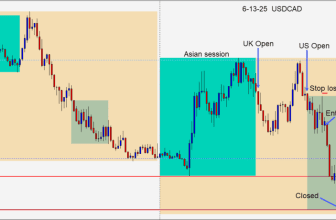
In the realm of forex trading, effective risk management is paramount for ensuring profitability and stability, especially for large institutional players. This white paper explores how institutional players like FXtriangle utilize FIX (Financial Information Exchange) API and MAM API (Multi-Account Manager) to distribute risk across numerous accounts. We will draw parallels to the practices employed by banks in block allocation to liquidity providers.
Understanding FIX API and MAM API
FIX API
The FIX protocol is a series of messaging specifications developed specifically for the real-time electronic exchange of securities transactions. It enables different trading platforms and financial institutions to communicate trade information and is known for its speed and reliability. FIX API allows for:
- Direct Market Access: Institutions can execute trades directly with liquidity providers.
- Low Latency: Ensures high-speed execution, critical in forex markets.
- Automated Trading: Facilitates algorithmic trading strategies and execution management.
MAM API
MAM API is designed for forex account managers who need to execute block trades across multiple client accounts efficiently. It offers:
- Trade Allocation: Distributes trades proportionally across multiple accounts based on predefined allocation rules.
- Real-Time Management: Allows managers to oversee and adjust trading strategies in real-time.
- Segregated Accounts: Maintains individual account integrity while enabling centralized trade execution.
Risk Management through FIX API and MAM API
FIX API: Direct Access and Speed
Institutional players like FXtriangle leverage FIX API to interact directly with liquidity providers, ensuring minimal delay in order execution. This direct access allows for:
- Market Depth Insights: Access to the best bid and offer prices, crucial for large order executions.
- Execution Quality: Improved fill rates and reduced slippage.
- Sophisticated Algorithms: Deployment of complex trading algorithms that can react swiftly to market conditions.
MAM API: Efficient Trade Allocation
The MAM API facilitates the distribution of a single block order across multiple client accounts. This process involves:
- Proportional Allocation: Ensuring trades are divided according to the size and requirements of each account.
- Centralized Control: Allowing a single manager to implement and oversee trading strategies across a wide client base.
- Risk Diversification: Spreading exposure to minimize the impact of adverse market movements on individual accounts.
Parallels with Bank Block Allocation to Liquidity Providers
Block Allocation in Banks
Banks use block allocation to manage large trade volumes by breaking them into smaller units and distributing them among various liquidity providers. This strategy involves:
- Minimizing Market Impact: Reducing the chance of significant price movements due to large order sizes.
- Optimizing Execution: Ensuring the best possible execution prices through diversified liquidity sources.
- Enhanced Risk Management: Spreading risk across multiple providers to avoid over-exposure to a single entity.
Similarities with FXtriangle’s Approach
FXtriangle’s use of FIX API and MAM API mirrors the banks’ block allocation practices in several ways:
- Efficient Trade Execution: Both systems aim to achieve optimal trade execution by leveraging direct market access and real-time allocation.
- Risk Distribution: By spreading trades across numerous accounts or liquidity providers, both approaches reduce the risk associated with large orders.
- Operational Scalability: They enable the handling of large trading volumes while maintaining control and oversight.
Benefits of Using FIX API and MAM API
Enhanced Risk Management
By distributing trades across multiple accounts, FXtriangle can mitigate the risk of significant losses due to market volatility. This distribution:
- Limits Exposure: Each account carries a fraction of the overall trade, reducing the impact of adverse market movements.
- Improves Stability: Diversified exposure leads to more stable returns.
Improved Execution Efficiency
The combination of FIX API’s low latency and MAM API’s efficient allocation ensures that trades are executed swiftly and accurately, resulting in:
- Reduced Slippage: Orders are filled at intended prices more frequently.
- Higher Fill Rates: Improved chances of executing entire orders without partial fills.
Scalability and Flexibility
These APIs provide the infrastructure to manage an increasing number of client accounts and larger trade volumes without compromising on execution quality or risk management. This scalability is crucial for:
- Growth Management: Supporting business expansion and a growing client base.
- Customizable Solutions: Tailoring trading strategies to meet diverse client needs.
Conclusion
The use of FIX API and MAM API by institutional players like FXtriangle represents a sophisticated approach to risk management and trade execution in forex trading. By drawing parallels with bank practices in block allocation to liquidity providers, we can appreciate the benefits of this strategy in enhancing execution efficiency, managing risk, and ensuring operational scalability. As the forex market continues to evolve, leveraging such advanced technologies will remain essential for maintaining a competitive edge and achieving long-term success.
References
- FIX Protocol Ltd. (2021). FIX Trading Community
- MetaQuotes Software Corp. (2021). Multi-Account Manager (MAM) API







